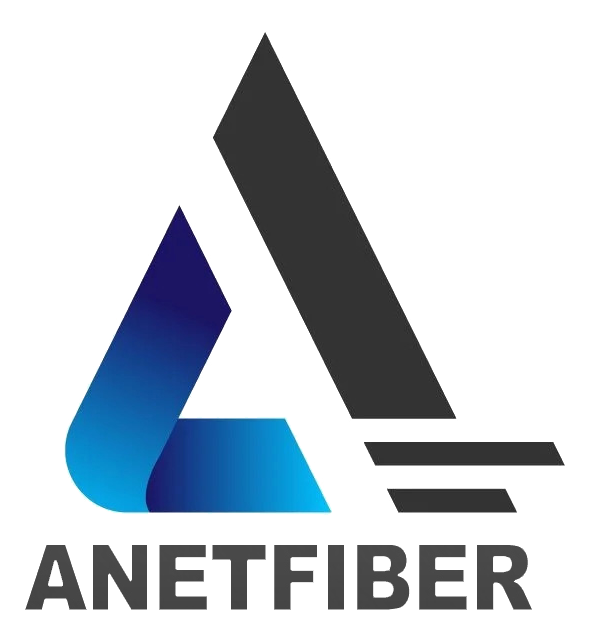4 Cutting-Edge Fiber Optic Technology Innovations Revolutionizing Data Transmission

Introduction to the World of Fiber Optics
Fiber optic technology has revolutionized the way data is transmitted, offering unparalleled speed, capacity, and reliability. In this section, we will delve into the basics of Fiber Optic technology and explore why it holds immense significance in today's world.
The Basics of Fiber Optic Technology
At its core, Fiber Optic technology involves transmitting data through thin strands of glass or plastic fibers. These fibers utilize total internal reflection to carry digital information over long distances with minimal signal loss. The use of light signals enables fiber optics to achieve remarkable data transmission speeds, making it a cornerstone of modern communication networks.
Why Fiber Optics Matter in Today's World
The widespread adoption of Fiber Optic technology has transformed various industries, including telecommunications, internet connectivity, and data transmission. Its impact extends to supporting 5G infrastructure and enhancing connectivity in data centers. As the demand for high-speed and reliable data transmission continues to soar, Fiber Optics play a pivotal role in meeting these evolving needs.
The Role of Fiber Optic in Modern Data Transmission
Fiber optic technology serves as the backbone of modern data transmission, playing a pivotal role in shaping the way we communicate and access information.
The Backbone of the Internet and Communication
Supporting 5G Infrastructure
The deployment of 5G networks relies heavily on fiber optic technology to ensure seamless connectivity and high-speed data transmission. Fiber optics provide the necessary infrastructure to support the unprecedented speeds and low latency offered by 5G, enabling a new era of mobile communication and internet connectivity.
Enhancing Data Center Connectivity
Data centers, which serve as the heart of digital operations for businesses and organizations, depend on fiber optic connections to facilitate rapid data transfer and processing. Fiber optics enhance data center connectivity by providing reliable, high-capacity links that are essential for managing large volumes of information efficiently.
Advancements in Data Transmission Speed, Capacity, and Reliability
Breaking Speed Records
Fiber optic advancements have led to groundbreaking increases in data transmission speeds, surpassing traditional copper-based systems. This has paved the way for near-instantaneous communication and real-time data transfer across vast distances.
Increasing Data Capacity
The continuous evolution of fiber optic technology has significantly expanded data capacity, allowing for the seamless transfer of massive amounts of information without compromising speed or reliability. As digital demands continue to grow exponentially, fiber optics play a crucial role in meeting these escalating capacity requirements.
Ensuring Unmatched Reliability
One of the most compelling aspects of fiber optics is its unparalleled reliability. Unlike traditional copper cables, fiber optics are immune to electromagnetic interference and signal degradation over long distances. This inherent reliability makes fiber optic technology indispensable for mission-critical applications where uninterrupted data transmission is non-negotiable.
Exploring the Latest Advancements in Fiber Optic Technology
In the realm of fiber optic technology, several groundbreaking innovations are reshaping the landscape of data transmission and expanding its applications across diverse sectors. Let's delve into some of the latest advancements that are propelling Fiber Optic technology to new heights.
Huawei's DFOS Solution for Pipeline Monitoring
Huawei has introduced a cutting-edge solution, known as the Distributed Fiber Optic Sensing (DFOS), which revolutionizes pipeline monitoring by leveraging optical technology in tandem with artificial intelligence (AI). This integration enables real-time monitoring and analysis of pipeline conditions, detecting potential issues such as leaks or structural weaknesses with unparalleled precision. By combining optical technology with AI capabilities, Huawei's DFOS not only enhances safety measures but also significantly improves operational efficiency, ensuring proactive maintenance and minimizing the risk of unforeseen disruptions.
Infinera and NEC's Optical Network Modernization
Infinera and NEC have collaborated to spearhead an ambitious project aimed at modernizing optical networks, particularly in connecting Mexico and the United States. This initiative showcases their commitment to advancing fiber optic excellence by deploying state-of-the-art infrastructure that supports high-speed data transmission over extended distances. The project not only emphasizes seamless connectivity but also underscores the pivotal role of fiber optics in fostering international collaboration and communication through robust network modernization efforts.
Huawei's Smart Airport Perimeter Security
Huawei has introduced an innovative approach to bolstering airport security through its Smart Airport Perimeter Security system, which incorporates advanced fiber sensing solutions. By implementing fiber sensing technologies along airport perimeters, this system effectively detects and differentiates between genuine threats and false alarms, thereby reducing false alarm rates significantly. This not only enhances overall security measures but also minimizes disruptions caused by unnecessary security protocols, optimizing operational efficiency within airport facilities.
How Cutting-Edge Fiber Optic Innovations Are Shaping the Future
As we stand on the brink of a new era in data transmission, the influence of cutting-edge fiber optic technology continues to shape the future landscape of connectivity and technological advancements. Let's explore the pivotal role that Fiber Optics are poised to play in driving innovation and meeting the evolving demands of tomorrow.
The Growing Fiber Optic Cable Market
The demand for Fiber Optic cables is projected to experience exponential growth, driven by the escalating need for high-speed data transmission across various industries. By 2030, industry experts anticipate a substantial surge in the deployment of Fiber Optic infrastructure, with an estimated market value reaching unprecedented heights. This surge is attributed to the indispensable role that Fiber Optics will continue to play in supporting advanced communication networks, internet connectivity, and emerging technologies.
Predictions for 2030
Industry analysts predict that by 2030, the global market for Fiber Optic cables will witness a remarkable expansion, propelled by increasing investments in next-generation network infrastructure. This growth trajectory is underpinned by the relentless pursuit of faster data transmission speeds and enhanced connectivity solutions across diverse sectors.
The Role of Fiber Optics in Future Technologies
As we look ahead to future technologies, it becomes evident that Fiber Optics will serve as a linchpin for powering transformative innovations. From smart cities and autonomous vehicles to augmented reality and artificial intelligence applications, Fiber Optics will form the backbone of these advancements, enabling seamless data transfer and unlocking new possibilities in how we interact with technology.
The Vital Role of Fiber Optics in 5G and Beyond
The advent of 5G technology heralds a new era of connectivity characterized by unprecedented speed, low latency, and massive device connectivity. At the heart of this revolution lies the indispensable role played by Fiber Optics, which serves as the enabler for realizing the full potential of 5G networks and beyond.
Enabling Seamless Data Transmission
In paving the way for seamless data transmission within 5G networks, Fiber Optics act as the conduit through which colossal volumes of data travel at lightning-fast speeds. This foundational infrastructure ensures that 5G networks can deliver on their promise of ultra-low latency and unparalleled bandwidth capabilities, thereby transforming how we experience mobile communication and digital interactions.
Preparing for the Future of Connectivity
Beyond 5G, Fiber Optics are instrumental in laying down the groundwork for future connectivity paradigms yet to unfold. As emerging technologies such as Internet of Things (IoT), edge computing, and immersive virtual experiences take center stage, Fiber Optics will continue to evolve as an essential component underpinning these innovations. Its ability to support massive data transfer requirements while maintaining reliability positions it as an indispensable asset in shaping our connected future.
Final Thoughts on the Impact of Fiber Optic Innovations
As I reflect on the transformative power of Fiber Optics, it becomes evident that its innovations have reshaped the landscape of data transmission and connectivity. The relentless pursuit of advancements in Fiber Optic technology has not only propelled the speed and capacity of data transmission but has also revolutionized the way we interact with digital information.
Looking ahead, the future of data transmission appears to be intricately intertwined with the continued evolution of Fiber Optics. As emerging technologies such as Internet of Things (IoT), artificial intelligence, and augmented reality gain prominence, Fiber Optics will remain at the forefront, underpinning these innovations with its unparalleled speed, reliability, and capacity.
The impact of Fiber Optic Innovations extends beyond mere technological advancements; it encompasses a profound shift in how we perceive connectivity and communication. The seamless integration of Fiber Optics into our daily lives has not only accelerated data transfer but has also laid the groundwork for a future where connectivity knows no bounds.
In conclusion, as we stand on the cusp of a new era in data transmission, it is imperative to recognize the pivotal role played by Fiber Optic Innovations in shaping this transformative journey. The future holds boundless possibilities, all made conceivable through the remarkable strides made possible by Fiber Optic Technology.


